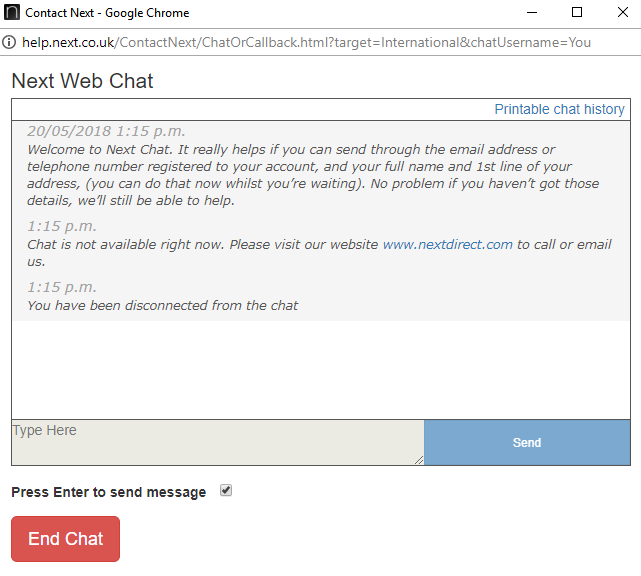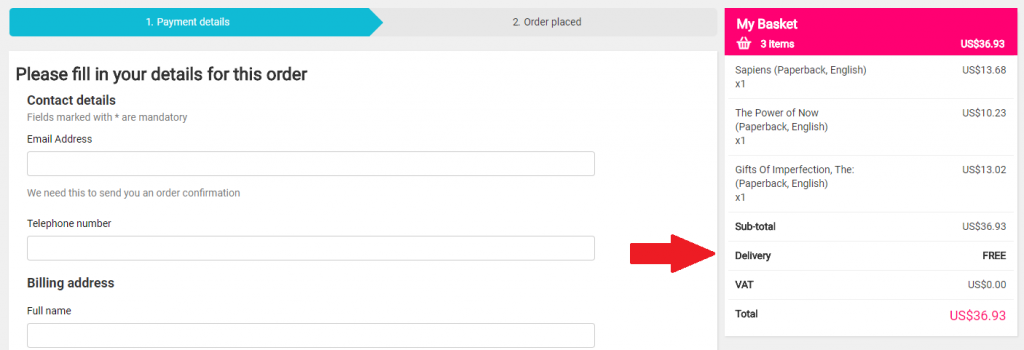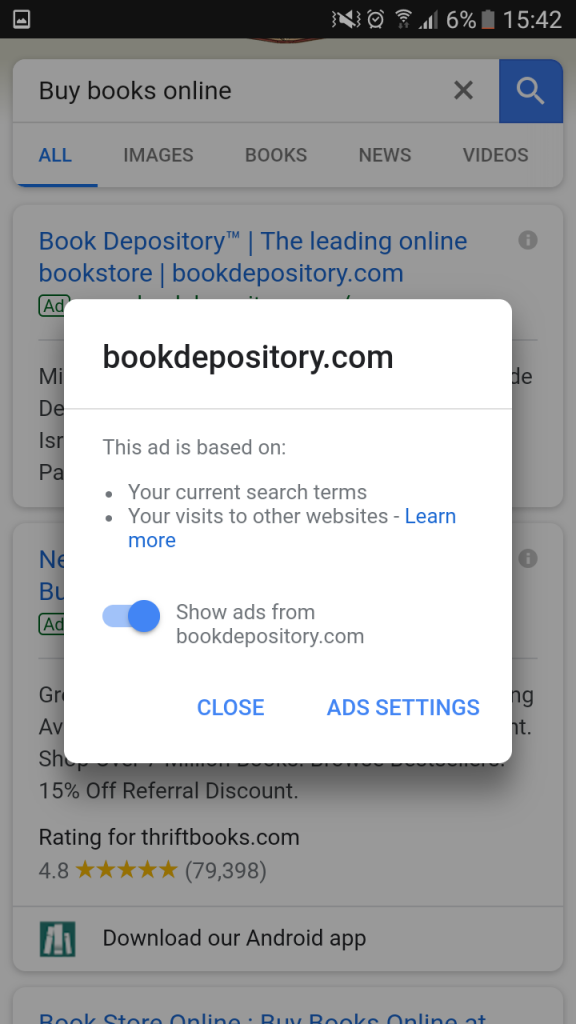Some of you may not know this about me: I am an online store fan through and through. I love researching new stores, building eCommerce strategies and finding new and exciting product trends – not just for the reason of collecting valuable and inspiring content for all of you, but because in truth, I have a little fetish for online shopping and do most of my personal buying through eCommerce sites.
Over the last couple of months during my blog research (and shopping), I have been noticing more often that some of the biggest online stores are making the simplest of mistakes. Mistakes that have pushed me to go to their competitors, take them off my ‘favorites’ lists, or cost them valuable upselling opportunities. Simple, rookie mistakes that are costing them sales.
This week, we will look at the 4 simple mistakes that even the biggest online stores are making – mistakes that our eCommerce Success Story brands have been able to overcome, to make themselves real contenders in the 7/8 figure eCommerce segment. 4 simple mistakes that can turn loyal customers away to your competitors and are ultimately costing you sales.
1: Delayed Customer Service Turnaround Times
One of my biggest pet-peeves is bad or slow customer service, and there are so many big brands that get this so wrong. Just the other day, I was forced to tweet a big brand to say that three weeks since sending an email, the only response I had gotten from them was an automated message saying, “At this time we are experiencing longer processing times than normal. Please be assured that we are doing all that we can to resolve your request as soon as possible.” Their response to my tweet? “Please note that processing times may vary as a result of research or internal investigations.” Four weeks later, I still haven’t even been put in touch with someone to tell them about the issue, let alone sort it out.
Okay, so this is an extreme case, but if you also send out automated email replies saying you will get back to your customers queries in 24 hours, ask yourself: How many of you get busy and don’t actually reply within 24 hours? I had one such situation with one of the best-known subscription services out there where, because I was not able to get assistance with a buying queries sooner, they lost out on a sale to their competitor.
Not as popular a service, but I was able to sort out my query and make a purchase before the well-known store even got back to me.
You have to ask yourself – what is the ROI on that service? The short answer is: brand loyalty and sales! For the big brand, it means loss of brand loyalty, as I would never shop with them again; and you have to wonder how many “me”s there are waiting for their response. For the subscription service, it’s sales, pure and simple; the cost of a three-month package in that moment, but also all the renewals that could have followed.
I get that a lot of large online stores opt out of chat functions on their site due to query volumes, and perhaps the cost of ensuring you can provide service 24 hours a day, 7 days a week, but you don’t need to offer chat outside your normal hours. Online retailer Next gets it right by providing email, calling and text, ensuring that regardless of when you need assistance, you are able to receive it.
2: Upselling Delivery Options
If Amazon has taught us anything, it is that customers aren’t just looking for good service, but faster service. Add that to the rise of voice shopping eCommerce trends, brands not upping their delivery speed games are going to fall further and further behind.
One of my favorite online book stores unfortunately proved that big, popular brands are not immune to missed opportunities. Just last week, I realized that I had forgotten to order a birthday gift for my father-in-law and headed over to their site to put it in. The problem is that they offer free shipping, which can sometimes take weeks, without any options for tracking or faster delivery.
We know that free shipping can be a huge draw card for customers; it’s how I found their store in the first place. However, if they had options to upsell faster delivery or tracking, there is a BIG chance I, as a very regular shopper, wouldn’t have just used it for the gift I was ordering, but also with many of my bi-monthly orders. And they are not the only ones; there are a few apparel stores I visit often that snag me with their free shipping over a certain dollar amount but fail to offer shipping upsells, which is particularly detrimental to sales over the peak holiday seasons where so many of us shop last-minute. Something smarter apparel retailers such as Old Navy understand too well.
3: Getting the Email Marketing Balance Off
We know that email marketing is a pivotal part of an online store’s marketing success. Every successful eCommerce entrepreneur we have chatted to, including Noli Yoga who used email to help build their now $3.4-million-a-year brand in just three short years. These emails include onboarding emails, automated emails for abandoned carts and regular newsletters, yet so many big eCommerce brands seem to be getting email marketing wrong.
Their biggest failing is getting the email marketing balance just right. One huge brand I bought from, for example, was sending me so many emails after I purchased that I unsubscribed from everything. The short of it was that they were bombarding my inbox to such an extent, almost one email a day, that I felt invaded – not inspired to buy. Not only did this give me a feeling of annoyance towards the brand, but by blocking their emails entirely, they have fallen prey to the ‘out of sight, out of mind’ marketing fail. Completely counterproductive to what I am sure they intended with sending discount, sale and new product news.
Another simple mistake even the biggest online stores make is that they are not segmenting their emails. I have a few brands that I don’t unsubscribe from because they come at most once a week, however, as their campaigns are not segmented (they are sending one newsletter to all their shoppers), I often delete them due to lack of relevance. You see, as your store grows to mega status, so do your product categories. The more categories you have, the more segmented your email marketing should be. For example, if I shop at an apparel store and only buy in their women’s category, a mass email announcing a new baby range or a new seasonal line in their men’s category won’t appeal to me. Instead, they should be splitting new arrivals into market segments and sending different emails to different segments based on shopping history.
If you don’t want to leave sales on the table like some big eCommerce stores do, find the sweet spot with your email marketing, ensuring your frequency and content matches the shopper you’re emailing. And don’t forget those automated emails!
Bonus Content: Monitor These 5 Email Marketing Metrics for Sales Success
4: Not Running Highly-Targeted Google Remarketing Campaigns
We know that AdWords is imperative in driving qualified, targeted traffic to online stores, and most big brands know how important search ads are. However, I am surprised by the few that spend all their budgets on running Facebook and Instagram remarketing campaigns, yet don’t include search remarketing campaigns in their marketing budget.
When I search to buy a specific thing online, if a brand comes up in the ads that I know well and have shopped with, even if I may have forgotten them for a minute, the chances of buying from them again are very high. Why? Because I have been to their site; I have a feeling of familiarity and trust. Additionally, in the case of having shopped from them before, and had a good experience doing so, why wouldn’t I want to shop with them again?
Plus, as we learned in our 5 Pro Ways to Turn Low-Traffic AdWords Campaign Losers into Winners post, remarketing is also a sure way of improving low search volume to bring more targeted shoppers to your store.
Bonus Content: Guide to Google AdWords Remarketing
—
It seems to me that for some brands, as sales increase, they get less concerned with the simple things. Things that can fall through the cracks and cost you a lot of revenue in the long run. This shouldn’t be the case! Whether you’re a newbie online store pushing $600k a year or a mega store with 8-figure months, your aim is still the same: ensuring you don’t leave possible sales on the table and building your loyal customer base.
As the eCommerce market continues to grow and flourish and as customers have their pick, they are deciding to choose quality service over price, and big online stores who forget these basics are missing out on big earning potential.
Want to know how your online store compares with the best of the best? Use our free Benchmark Hero app for a site audit.

Nicole is a content writer with over sixteen years experience and flair for storytelling. She runs on a healthy dose of caffeine and enthusiasm. When she's not researching the next content trend or creating business content strategies, she's an avid beachgoer, coffee shop junkie and hangs out on LinkedIn.
Recommended articles
 Facebook Ads for eCommerce: 16 Strategies, Examples & Tips
Facebook Ads for eCommerce: 16 Strategies, Examples & Tips
 How to Build a Winning eCommerce Ads Strategy
How to Build a Winning eCommerce Ads Strategy
 Google Ads for eCommerce: Everything You Need to Know
Google Ads for eCommerce: Everything You Need to Know
 10X Your Traffic with PPC Management Software
10X Your Traffic with PPC Management Software
Comments
Powered by Facebook Comments








